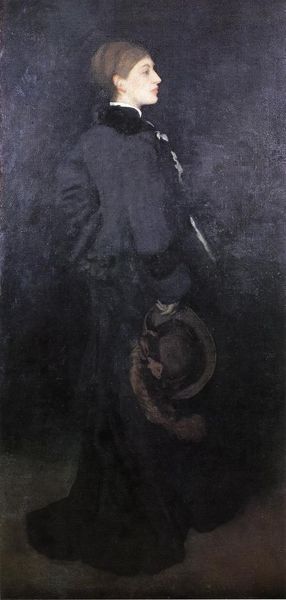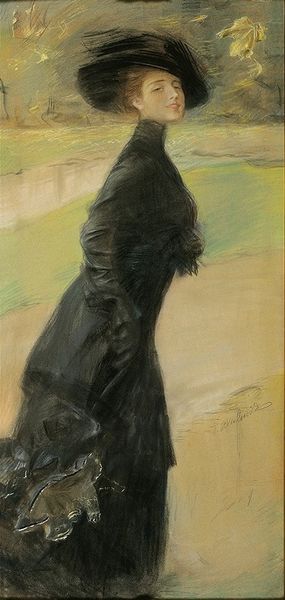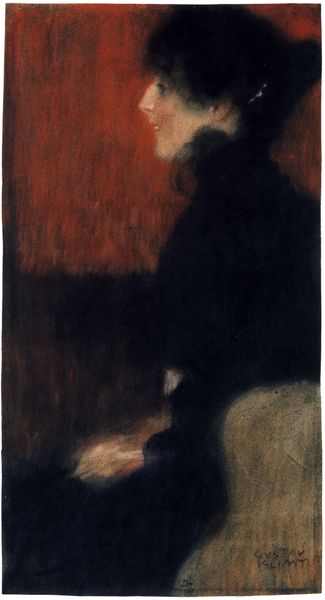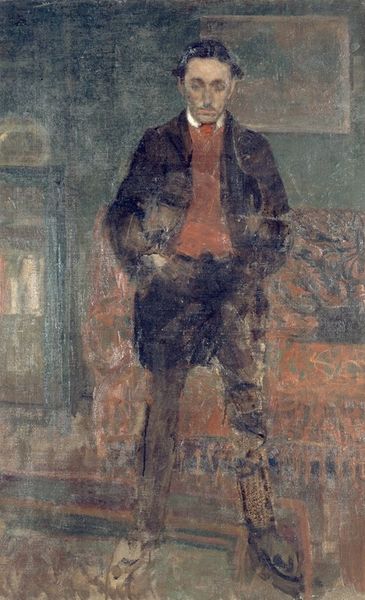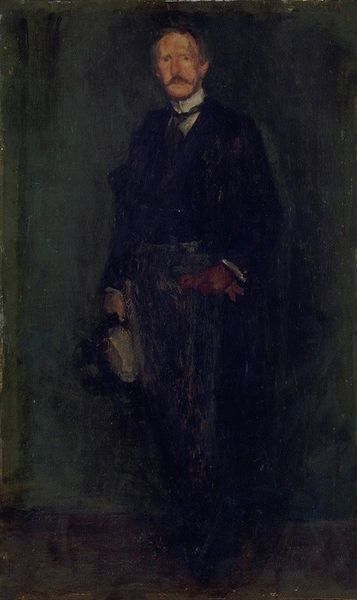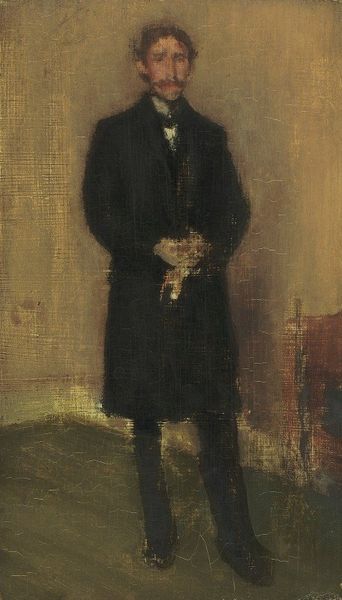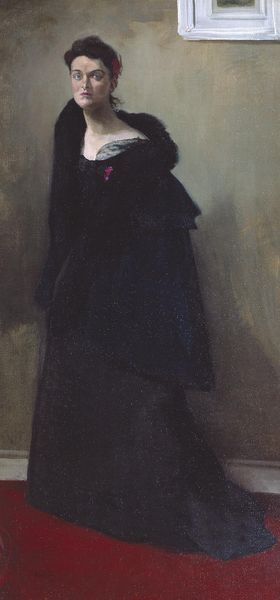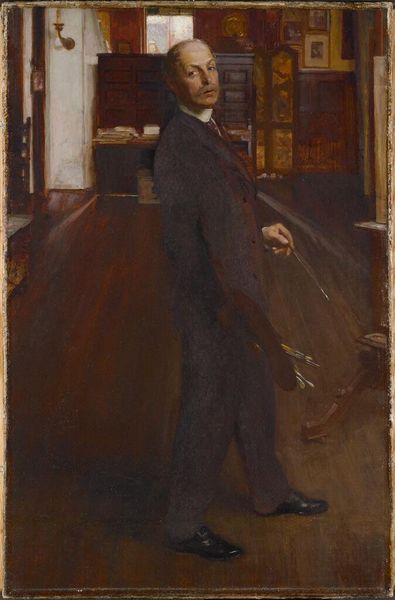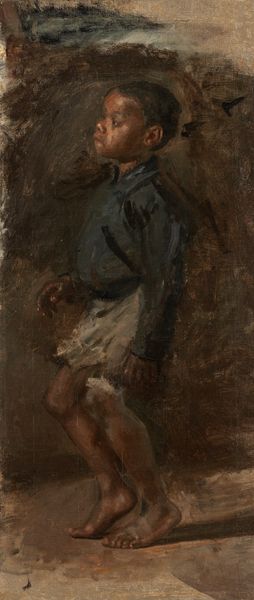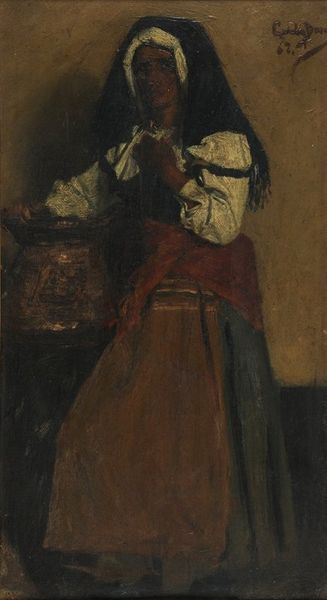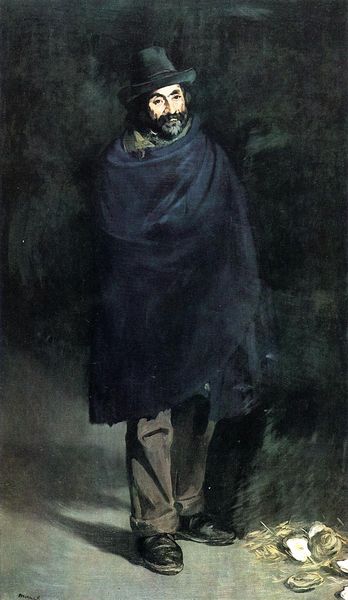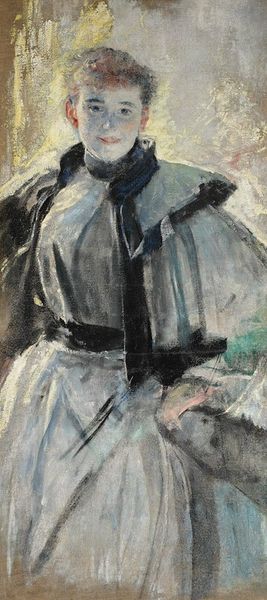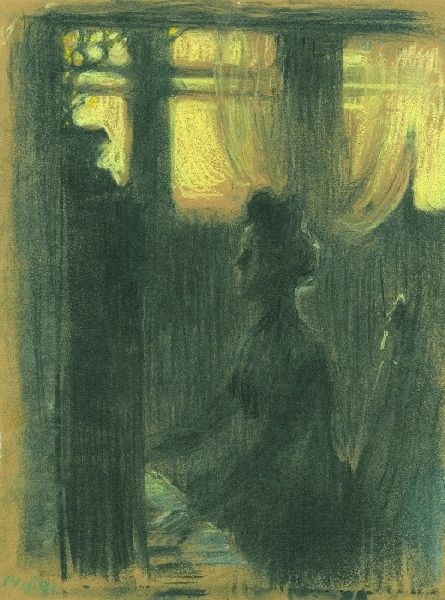
painting, oil-paint, impasto
#
portrait
#
figurative
#
painting
#
impressionism
#
pencil sketch
#
oil-paint
#
charcoal drawing
#
figuration
#
impasto
#
intimism
#
charcoal
Copyright: Public Domain: Artvee
Curator: Here we see "Study For The Coin Collector," a captivating oil on canvas piece by Vilhelm Hammershøi. It pulls you right in, doesn’t it? The tones are almost entirely muted, a study in blacks and grays, save for the stark white of the man’s collar. What's your immediate impression? Editor: My initial reaction is somberness. The restricted palette and the man’s bowed head create a feeling of introversion, even isolation. There’s an almost palpable sense of quiet melancholy. Curator: I agree. And context is crucial. Hammershøi was painting during a time of immense social and political change in Europe. His interiors and portraits often reflect this underlying tension and a retreat into private spaces. Think about the rise of industrialization, urbanization – the individual getting lost. Editor: It's interesting you say that. The subject, presumably the coin collector, is quite literally consumed by his private interest. Is he retreating, or actively participating in a system of value— collecting wealth while others lack basic needs? Is this perhaps a critique? Curator: That's a powerful interpretation. Consider also the very act of collecting. Who gets to collect and preserve history, and whose stories are deemed valuable enough to be saved? Hammershøi often played with these ideas of bourgeois domesticity versus social alienation. His work wasn't always outwardly political, but it prompts questions about power, representation, and individual agency within broader social structures. Editor: Exactly, even in the way Hammershøi uses the impasto technique, heavy with the charcoal darkness surrounding the subject. Is this just painterly technique, or might the darkness around his figure represent societal pressures—the shadows closing in around the bourgeois subject? Curator: The lack of precise detail is deliberate. He's focusing our attention not just on *who* this man is, but *what* he represents within his time and ours, his hunched pose suggests an inability to shoulder the weight of the era. Editor: The way this piece prompts me to interrogate its nuances— the muted colors and isolated subject included—make it really compelling. Curator: Absolutely, this "Study" serves as an invitation to consider the social and historical undercurrents shaping both the subject's world and our own. It highlights how something as seemingly simple as a portrait can speak volumes about complex societal issues.
Comments
No comments
Be the first to comment and join the conversation on the ultimate creative platform.
